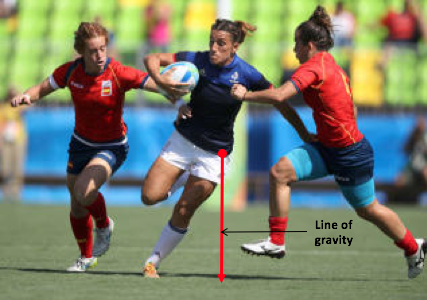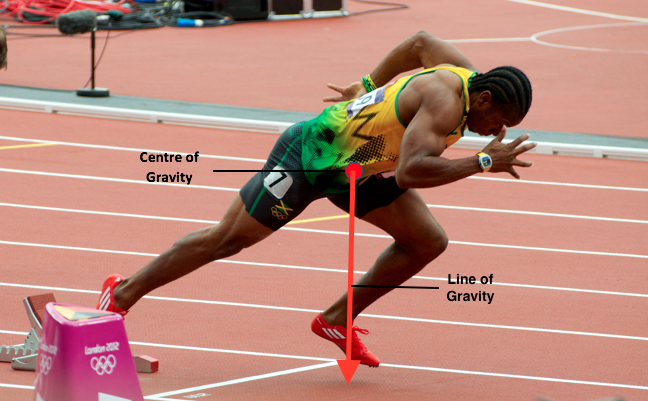The line of gravity is an imaginary vertical line from the centre of gravity to the ground or surface the object or person is on. It is the direction that gravity is acting upon the person or object. In the image above you can see the line of gravity in red going down to the ground from the centre of gravity, indicating the force of gravity upon the sprinter.
The location of this line in relation to the base of support has a huge influence on balance and stability. In the anatomical position (right) the line of gravity is between the legs and feet right under the person.

The closer the line of gravity is to the centre of the base of support (your next dash point) the better balanced a person is in this position. If the line of gravity fall outside of the base of support the person must provide corrective muscle action, usually movement otherwise they will fall. This is why the sprinter’s line of gravity is in front of his base of support (back foot on the ground) because it must be there in order for him to be stable and move forwards. If the line is in his base of support and he starts running, he will fall backward, unless he moves the line to in front of him.
Since a lower centre of gravity means better balance and stability, a shorter line of gravity between the centre of gravity and the ground also means better balance and stability. So rugby player dodging through the defence will shift her line of gravity outside of her base of support in various directions as she changes direction and will also lower her centre of gravity.

The LOG falls outside the base of support and will be to the side and in front of the player in order to allow her to continue to accelerate forward and to her left (our right).

